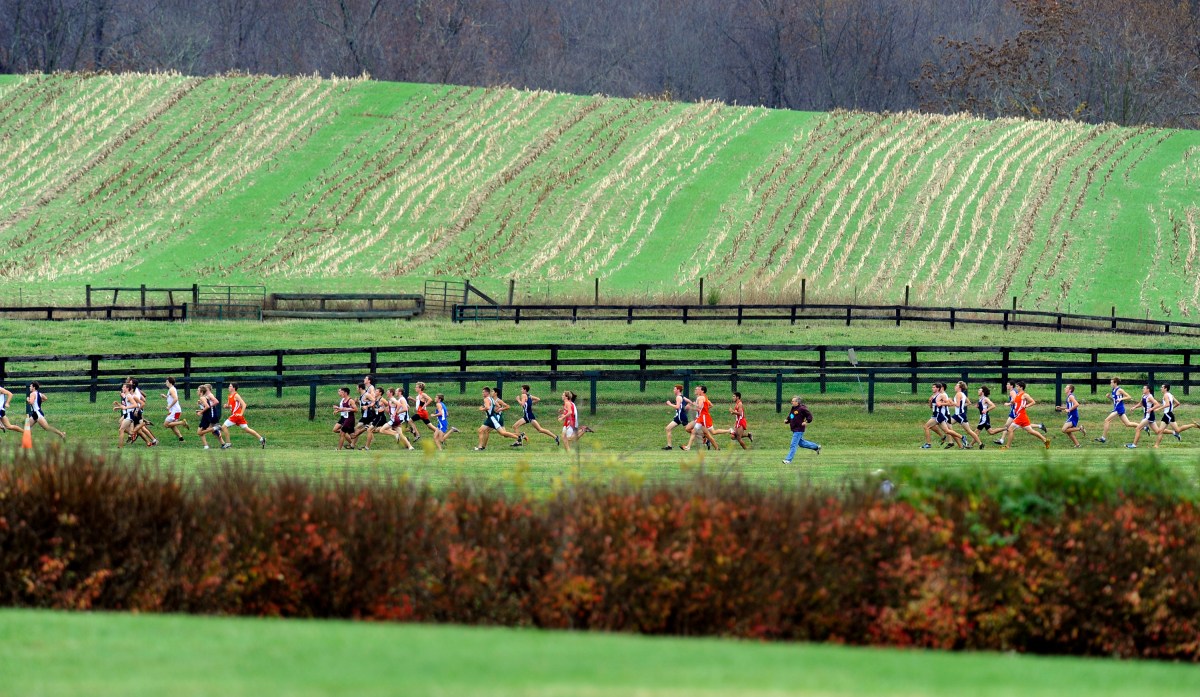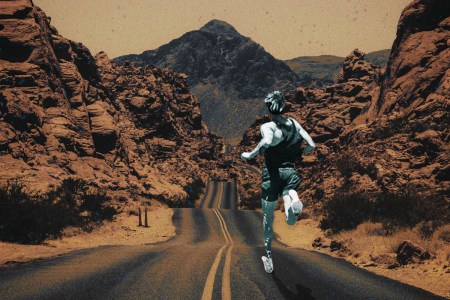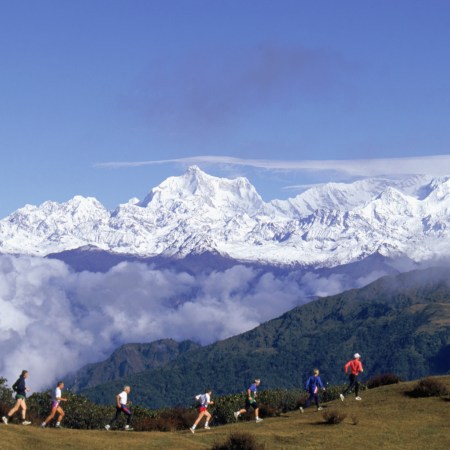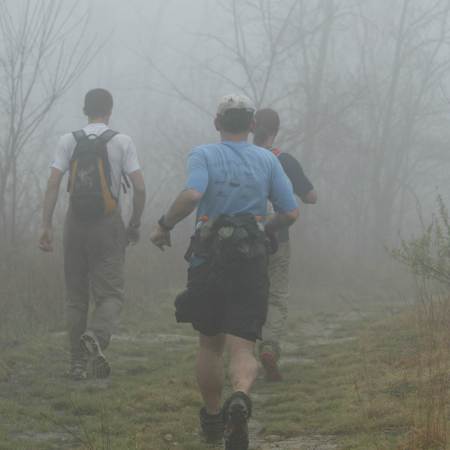Jakob Ingebrigtsen didn’t just run like an Olympian at the age of 14. The Norwegian sounded like one too, offering the sort of terse, post-race self-reflection that is typical from elite runners at the highest echelon of the sport. After decapitating the U15 national record for the 3,000 meter in 2015 (he ran 8:25.90, good for a mile pace of 4:30), Ingebrigtsen said to reporters: “A fine run from my side. I could have clearly run a good deal faster.”
Two years later, when Ingebrigtsen became the very first 16-year-old (and human being born in the 21st century) to break the four-minute mile barrier, he offered: “The training has been fantastic throughout the winter and spring, and now I have a solid response that it works.”
What Drives the Runners Who Participate in the Relay Race From Hell?
Dispatches from Speed Project, a mythical, underground 350-mile race through California’s high desertWhy so professional? Well, by Ingebrigtsen’s own accounting, he’s trained like one since the age of eight. And in defiance of conventional (go slow or you’ll plateau) wisdom, Ingebrigtsen’s career has continued to “work” well into present day. Ingebrigtsen won gold in the 1500 meter at Tokyo last summer, then ran the fastest mile in 21 years (3:46.46) back home in Norway.
Hailing from a family of running royalty — both of his older brothers have broken the four-minute mile, too — Jakob is unequivocally the best. He could go down as the best middle-distance runner ever once it’s all over.
Unless…someone faster comes along. Which could be Cameron Myers, the Aussie prodigy who took down Ingebrigtsen’s old U16 1500 meter world record last week, running a 3:38.02. Or it could be one of Ingebrigtsen’s own countrymen — albeit a currently a very tiny countryman.
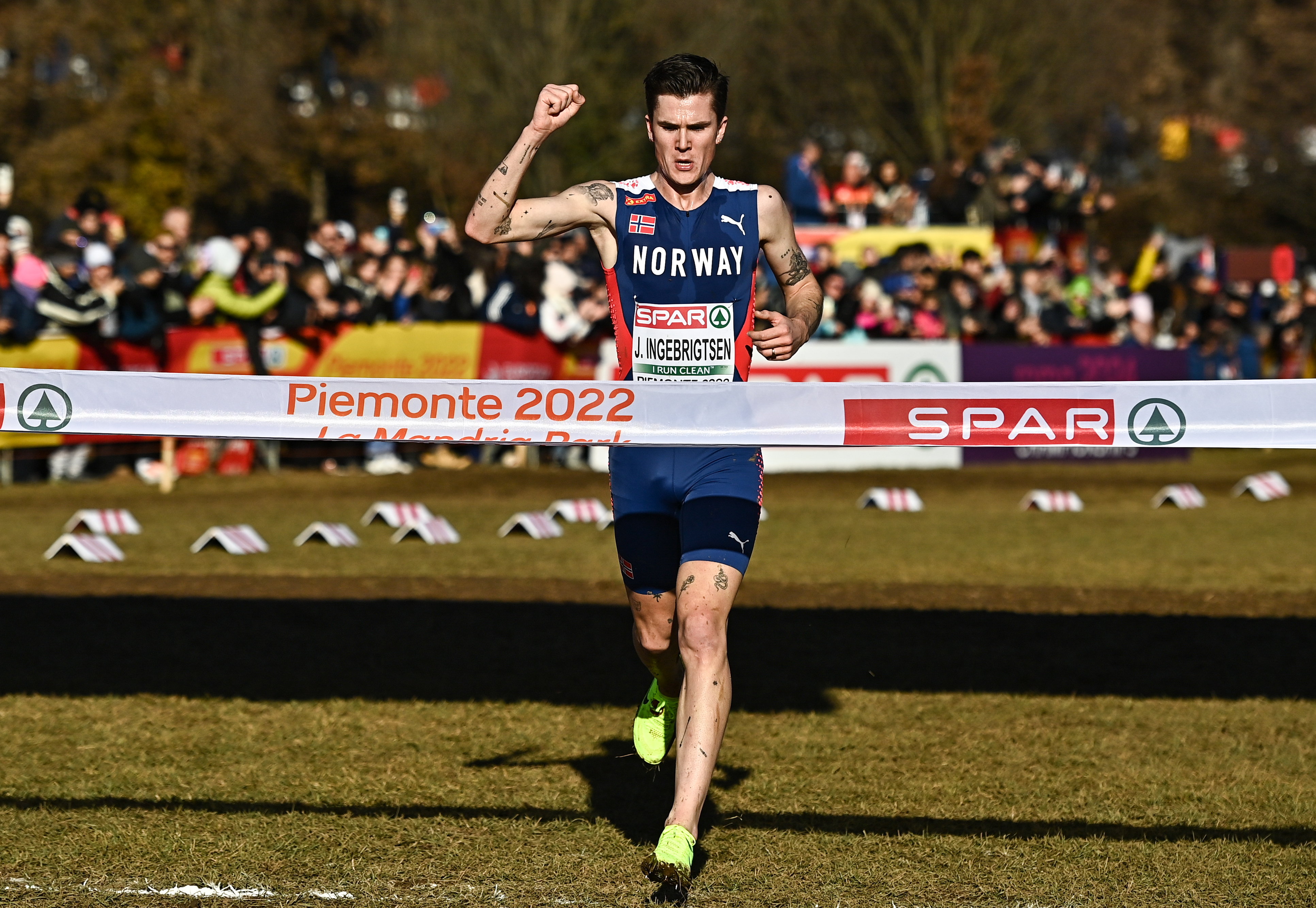
Per August Halle Haugen, of Stavern, Norway, just turned 13. He certainly looks it; and yet the little fellow’s somehow already run a road 5K at 16:13, and a road 10K at 33:17. The latter was the second-fastest time ever run by a 12-year-old boy.
Norway connection aside, Halle Haugen has a similar story to Ingebrigtsen: once-in-a-generation natural talent, fast siblings, a parent-coach and a professional approach that defies his youth. And now that Halle Haugen is 13, he’s officially eligible to compete in age-category prizing and championships throughout Norway, which will inevitably usher in years of high-profile races and headlines.
The familiar, family-targeted criticism will likely roll in in kind. How dare he be allowed to train so seriously at such a young age? Shouldn’t he be playing soccer and messing around with his friends? Does his mother (Gunhild Halle Haugen, who once ran 15:09 for the 5,000 meter) really expect such perennial and monastic training to get her son to Eugene one day?
To the last question: Why shouldn’t she? Especially after Ingebrigtsen’s ascension? All of Norway watched the Ingebrigtsen family on a reality TV running show (called Team Ingebrigtsen) for five seasons. They’re legends. Sustained success on the international circuit is life-changing and worth chasing, same as any other sport.
And if Halle Haugen does make it, as Generation Alpha’s analog to Gen Z’s Ingebrigtsen, the come-up might not just be coincidental — it could be the start of a long and illustrious trend. Natural talent is rife the world over (as is altitude, springy sneakers and recovery devices). But techniques to best train that talent vary. Could the Norwegians be onto something?
The Norwegian Method
As Outside’s Alex Hutchinson noted in a recent edition of his Sweat Science series, the buzzy “Norwegian endurance training method” appears to have propelled the rise of the Ingebrigtsen brothers, plus Olympic triathlon champion Kristian Blummenfelt and Ironman world champion Gustav Iden.
Long story short, the Norwegians are now pricking their fingers during interval sessions, in order to capture droplets of blood as quickly as possible and measure the concentration of of lactate. They’re using Bluetooth-equipped machines called Lactate Scouts, which connect to heart rate monitors and deliver results in 10 seconds.
Sports performance researchers (who have corresponded with Jacob’s father, Gjert Ingebrigtsen) have theorized that keeping one’s lactate levels in an optimal range (specifically: between 2.0 and 4.5 mmol/L) allows long-distance runners to train “at threshold.” Threshold is good. It means you’re working hard and getting better, but not working too hard and getting fatigued.
With all this copious measuring, the athletes can make sure that they haven’t pushed themselves into a higher lactate zone, which could lead to long-winded recovery time and shittier sessions later in the week. On the contrary, they’re able to schedule the next session as quickly as possible.
The Norwegians (including Halle Haugen) are doing threshold runs twice a day, twice a week. One in the morning and one at night, on Tuesday and Thursday. Instead of running for mileage or pace, the Norwegian runners stage intervals that expressly target various lactate zones. The example provided in the method’s most prominent, pro-Norwegian method paper reads as follows:
- Tuesday morning: 5 x 6:00 at 2.5 mmol/L with 1:00 recovery
- Tuesday evening: 10 x 1,000 meters at 3.5 mmol/L with 1:00 recovery
- Thursday morning: 5 x 2,000 meters at 2.5 mmol/L with 1:00 recovery
- Thursday evening: 25 x 400 meters at 3.5 mmol/L with 0:30 recovery
Brisbane 2032
In a video that Halle Haugen (or someone in his family) posted to YouTube, the youngster showcases a typical “Saturday in Stavern.” He and his older brother and older sister (the brother has ran a 5K in under 14 minutes), sprint up and down a hill near their home. Halle Haugen’s speed is obvious even in the six-minute splice. His form is flawless, he doesn’t labor too much with the hill repeats, and when it’s time for the second session, he rips off over seven kilometers with his sister at a pace somewhere in the neighborhood of 5:45/mile.
Halle Haugen has Norway’s old-school long-distance pedigree — his grandfather, also named Per Halle Haugen, even ran for Norway in the 1980s. But the eighth-grade-aged runner speaks the new school, too. In the matter-of-fact style of Ingebrigtsen, he rattles off assessments of his lactate threshold for the day, pondering whether a cross country skiing adventure the day before left him a little too tired for the day’s training session(s). At multiple points throughout the session, he pricks his finger with the help of his mom. And in a different video Halle Haugen travels to a special studio to assess his VO2 max, a test to determine the maximal oxygen one can consume during exercise.
While Los Angeles 2028 is simply too soon, it seems fair to say that at this current trajectory, Halle Haugen could be on the track at Brisbane in 2032 — and likely an international forced to be reckoned with at events in the years prior. He’s a prodigy, for starters; but just as significantly, his “typical” Saturday, is a double-threshold training plan built around a vangaurd endurance-loading strategy. Someone has to be an Olympian, right? Let alone make a run at the title for best ever. Is there an “appropriate” age to start that chase?
Is it all just too much?
That’s…extremely tough to say. The running world is understandably concerned about a trend that has seen younger and younger runners showing up to longer and longer races. Overuse injuries and overtraining burnout are both on the table. If aggressive (and borderline abusive) coaching tactics can torpedo the careers of world-class Nike athletes, surely children can’t be expected to always know what training methods will help them grow, and which ones are simply too much.
But that’s what makes the Norwegian method so fascinating. As jarring as it is to see Halle Haugen drawing blood from his finger as casually a youth basketball player might swig some Gatorade on the way back to the bench, the larger scheme is in service of restraint. Ingebrigtsen, for instance, has famously claimed that he doesn’t go past 87% effort in his training sessions. He and his brothers liken their training-to-race blueprint to growing a garden and picking vegetables; if you pluck them too early, they’ll rot on your kitchen counter.
If a 13-year-old must train like an elite runner, then (and, quite frankly, Hauge Hallen is an elite runner; if he ran in an American high school state cross country championship tomorrow he’d place pretty well) perhaps the Norwegian method is the best way to go, anyway. Outside of those double-threshold days, Norwegian-model runners sort of plod along, racking up easy miles.
Does Halle Haugen like running? It sure seems that way. As much as the internet likes to clutch its pearls, fire off a couple comments, then scroll to a new corner, let’s let this one lie and let the kid run. He’s young, sure, but he’s only entering the family business.
The Charge will help you move better, think clearer and stay in the game longer. Subscribe to our wellness newsletter today.
